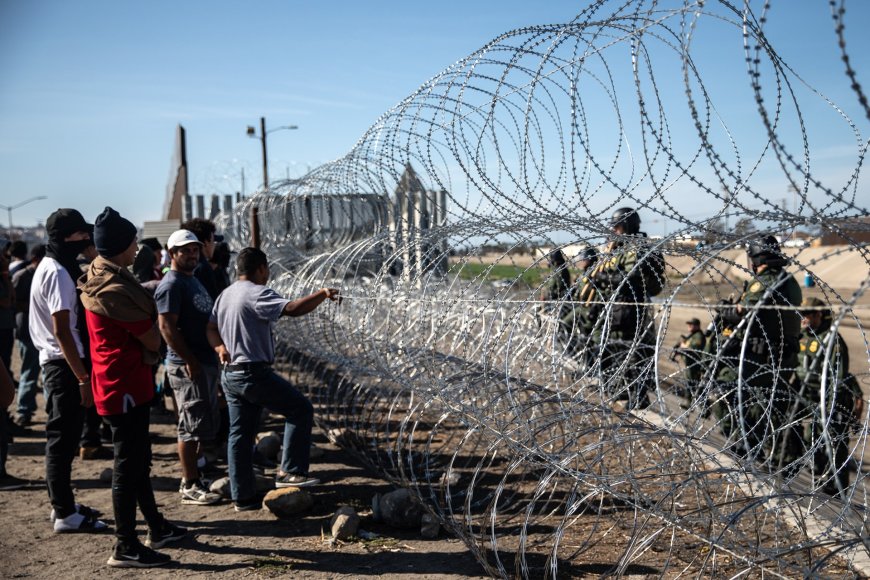The End of Title 42: Changes and Expectations for Asylum Seekers
What the Lift of COVID-era Border Restrictions Means for Migrants and Immigration Policies

The expiration of Title 42, a pandemic border restriction policy, has brought significant changes to the U.S. asylum system. This article explores the implications of lifting Title 42, the Biden administration's approach to handling asylum seekers, the return of Title 8 protocols, potential challenges, and the new measures implemented to address the situation. From processing delays to the establishment of regional processing centers, this transition period carries important consequences for migrants and immigration policies.
The End of Title 42 and the Biden Administration's Response
The termination of Title 42: On Thursday at 11:59 p.m. ET, the restrictive border policy known as Title 42 was lifted, allowing for the reevaluation of asylum applications after over three years of limited access. The Biden administration has implemented new asylum rules and legal pathways aimed at deterring illegal border crossings and managing the influx of asylum seekers.
Return of Title 8 and Its Implications
Transition to Title 8 protocols: With the lifting of Title 42, migrants who have been waiting in Mexico will now fall under Title 8 regulations. Under these laws, individuals cannot be turned away or deported without a screening for asylum claims. They will enter the country and undergo expedited removal, including a credible fear interview. Those with valid claims will be permitted to stay as their cases progress through immigration court, while others will face deportation.
Challenges and Bottlenecks in the Asylum Process
Anticipated backlog and strain on resources: The longer processing times resulting from the new protocols are expected to create bottlenecks at ports of entry and detention centers. This situation will put a strain on federal, state, and local government resources as they cope with the increased demand for services and accommodations.
Penalties and Changes Under Title 8
Stiffer penalties for illegal border crossings: While the return of Title 8 provides hope for migrants stuck in precarious situations, it also introduces harsher penalties for those caught crossing the border illegally. This includes potential prosecution and a five-year ban on reentry for deported migrants.
New Rules and Measures to Manage the Situation
Efforts to address the immigration challenges: The Biden administration has rolled out new measures to discourage illegal border crossings and establish legal pathways for migrants. These include the limitation of asylum for those arriving at the U.S.-Mexico border without prior online application or seeking protection in other countries. Additionally, plans are underway to open regional processing centers, increase appointment availability through a new online platform, and track released migrant families through the Family Expedited Removal Management program.
Current Situation and Future Outlook
Deployment of military troops and reducing custody numbers: In response to the crisis, active-duty military troops have been deployed to the border as support. While the number of migrants in custody remains well above capacity, officials report progress in reducing the figures. However, estimates of the total number of migrants waiting along the border vary, with officials suggesting a more moderate count.

Immigrants gather near the U.S.-Mexico border fence in El Paso, Texas, as the city declares a state of emergency to handle the expected increase in arrivals after the end of Title 42. | Image Source: John Moore/Getty Images
Potential Peak and On-the-Ground Campaigns
Expectations and efforts to manage the situation: Border Patrol officials believe that the recent surge in arrivals, driven by the lifting of Title 42, could represent the peak of the crisis. Authorities have initiated campaigns to persuade individuals to turn themselves in and alleviate future bottlenecks.
In conclusion, the termination of Title 42 and the implementation of new asylum rules mark a significant shift in the U.S. immigration landscape. The return to Title 8 protocols means that individuals will no longer be turned away at the border without screening for asylum claims, offering hope for those who have been waiting in Mexico under challenging conditions. However, the longer processing times and increased demand for services may lead to bottlenecks and strain government resources.
The Biden administration's efforts to discourage illegal border crossings and create legal pathways demonstrate a commitment to finding solutions to the complex issue of migration. The establishment of regional processing centers, the new online platform for appointment scheduling, and the Family Expedited Removal Management program are steps toward a more organized and efficient system.
While there are challenges ahead, including potential legal challenges to the new rules, the administration's focus on addressing the root causes of migration and building partnerships with countries in the Western Hemisphere shows a comprehensive approach to the issue. It remains to be seen how effectively these measures will be implemented and how they will impact the overall immigration landscape.
As the situation continues to evolve, close monitoring and ongoing adjustments will be crucial to ensure fair and efficient processing of asylum claims while upholding the integrity of the immigration system. The end of Title 42 is a significant milestone, but it is only the beginning of a complex journey toward a more compassionate and effective approach to asylum and immigration in the United States.
Also Read: New EV Tax Credit 2023: List of Electric Vehicle Models Eligible for Up to $7,500 in New Tax Credits
































































